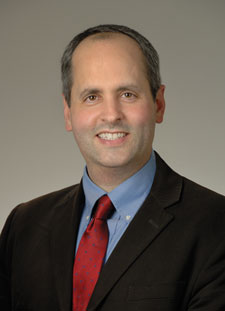Alliance Discussion with Jon Lorsch: NIGMS’s Strategic Investment in Early Career Researchers that is Driving Biomedical Progress

In our most recent alliance discussion, we were joined by Jon Lorsch, PhD, Director of the National Institute of General Medical Sciences (NIGMS) at NIH. Dr. Lorsch provided an update on the Institute’s role in bringing about more sustainable and inclusive career paths for early career researchers across medical and health research disciplines. Here are some highlights from his remarks:
On how NIGMS supports fundamental investigator-initiated research:
“The way [the Maximizing Investigator’s Research Award (MIRA) program] works is that we give one grant per principal investigator, and that grant is to provide support for their NIGMS-related research program. Because of that one grant per investigator model, the MIRA grants are longer. On average, they’re larger than NIGMS R01s in terms of budget. A very important aspect of the program is that we give investigators a lot of flexibility in the research they do. There are no specific aims associated with a grant. You’re not asked to say in detail what experiments you’re going to do moving forward for the next four or five years. Instead, we’re very clear that investigators can change the research direction as new ideas occur, as new observations are made in their lab. We think that this is the way science works; that a new observation leads to a new set of experiments, which may lead to a new major breakthrough. By giving this flexibility, we think that we’re allowing investigators to do the most creative research, and also to have the largest chances of making those breakthroughs that can lead to major changes in medical practice down the road. In addition to making the grants a year longer, one of the goals was to make the grant very stable so that investigators weren’t constantly worried about losing their funding, which we reasoned would also allow them to do more ambitious and creative research.”
On NIGMS funding early-stage investigators:
“Looking now at early-stage investigators (ESI), […] we have tripled the number of ESIs we fund each year since 2013. NIGMS, the last four or five fiscal years, funded the most ESIs of any NIH institute or center despite not having the largest budget.”
“Both applicants and awardees are younger in the MIRA program and that has been consistent throughout the life of the program. So far, 60% of the investigators applying for ESI MIRAs in 2022 did so within two years of getting their first assistant professor or equivalent position. We’re very explicit in the program that we’d like people to apply as soon as they get their faculty positions and we’ve made it clear to the reviewers in the funding opportunity announcement and in their training sessions that the applicants are not expected to have preliminary data or publications from the independent labs.”
On targeting the next generation of the research workforce:
“The IDeA Networks of Biomedical Research Excellence are statewide networks that link one or more research intensive institutions in the IDeA states to the primarily undergraduate institutions in those states. The goal is to build that pipeline of students who are exposed to and able to conduct cutting edge biomedical research, and hopefully get them to go into doctoral degree programs, and thus become associated with the biomedical research enterprise either as researchers or as careers supporting the research enterprise.”
On enhancing diversity in the research workforce:
“I think the overall goal [of increasing diversity of applicants and awardees across NIGMS programs], is to broaden participation in the research enterprise. There is talent all over the country and it’s very important to tap into all of that talent because you never know where the next big discovery is going to come from. People from different backgrounds, from different regions, with different life experiences ask different questions and think about things in different ways. Getting those different questions asked, getting those different life experiences brought to bear, and answering those questions is critically important. That’s the overall goal – broadening participation and getting more talent and more ideas, and more questions asked and answered.”
On how NIGMS supports opportunities for scientists across the research enterprise:
“[NIGMS is] the biggest funder of training programs at NIH. We put into the [training programs’] funding opportunity announcements specific language strongly encouraging the programs to make sure they are considering this broad range of careers that their graduates will go into – that all support the research enterprise in different important ways, rather than just thinking about academic research. We also ask them in the application to say how they are going to try to change this culture so that there is support for people doing a broad range of things and building those transferable skills. Many of those transferable skills are important no matter what career you go into.”




